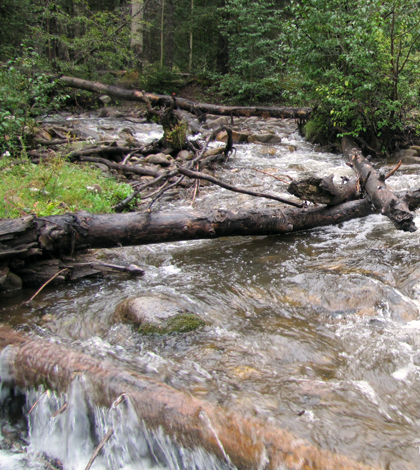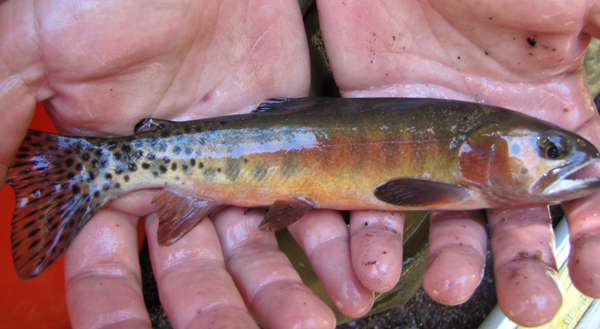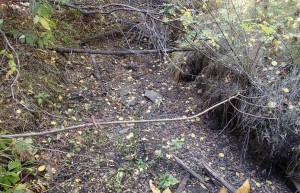Monitoring network tracks Rio Grande cutthroat trout’s shrinking habitat

A rare trout subspecies native to New Mexico and Southern Colorado swims in just a fraction of its historic range. As climate change threatens to overheat or dry up the fish’s already dwindling habitat, scientists are working on streamflow and water temperature monitoring network to help track suitable habitat and guide future restoration efforts.
The Rio Grande cutthroat trout was once abundant in the Rio Grande, Canadian and Pecos River systems, but today is limited to around 800 river miles, around 12 percent of its peak range.
The habitat loss came about through competition from stocked nonnative species and human habitat disruption like livestock grazing. Now another threat looms: the increased air temperatures and decreased precipitation projected for the region.
Both could further restrict Rio Grande cutthroat trout habitat, according to Matthew Zeigler, a senior fisheries research assistant with New Mexico State University’s Department of Fish, Wildlife and Conservation Biology.
In 2008, Zeigler’s study of Rio Grande cutthroat began in the laboratory with Colleen Caldwell, unit leader at U.S.Geological Survey’s Cooperative Fish and Wildlife Research Unit housed at New Mexico State. They sought out the upper limits of the temperature range at which the subspecies could survive. Once they found out how warm was too warm, they wanted to compare the temperatures they came up with to the fish’s home streams.
“We wanted to look at some data from where the fish are actually found to see how close they are to those thermal limits we found in the lab,” Zeigler said. “But there wasn’t a lot of data out there. Some of the streams had a little bit of data, but it was pretty spotty.”

Rio Grande cutthroat trout (Credit: Matthew Zeigler)
Zeigler and his colleagues set out to build a long-term stream temperature monitoring network. Through 2010 and 2011, they outfitted 108 stream sites with Onset HOBO Pro v2 water temperature data loggers programmed to record measurements every hour. Another logger at each site measures air temperature.
During the fieldwork, the researchers found that some of the streams they were measuring were incredibly small–some with flow rates as low as 1 cubic foot per second.
“In the fall of 2012, we found two sites that were completely dry,” Zeigler said. “With the drought that we’re currently in, some of these streams are actually going intermittent and drying in places.”
That made it clear that water quantity could be as important as temperature when it comes to future cutthroat habitat. So they started taking discharge measurements when they visited sites to download data from the temperature loggers.

Cat Creek in Colorado ran dry in 2013, but otherwise holds Rio Grande cutthroat (Credit: Andrew Todd)
Data from the effort were published in a recent USGS report authored by Zeigler, Caldwell and USGS Research Biologist Andrew Todd. The results show that temperatures at most of the 108 stream sites are within the optimal range for Rio Grande cutthroat, though a few were above or approaching the upper limit. Meanwhile, around 75 percent of the sites had baseflow discharge levels below 1 cubic foot per second.
Zeigler said that the projected increased air temperatures brought on by climate change could push cutthroat populations upstream to seek out cold water refuges. At the same time, the projected decrease in precipitation could lead to upper stream reaches going dry.
“So you’d really get kind of like a vise for these populations, where you’re losing habitat form below and habitat from above,” Zeigler said.
The data from the network could help fisheries managers better calibrate their restoration efforts by focusing on streams that are within the optimal temperature range and likely to stay there, making it more likely that the fish will continue to swim in their native range for generations to come.
After all, it’s a pretty nice place to live.
“New Mexico and southern Colorado are very beautiful. They’re all high mountain streams,” Zeigler said. “The fieldwork is nothing to complain about.”





0 comments